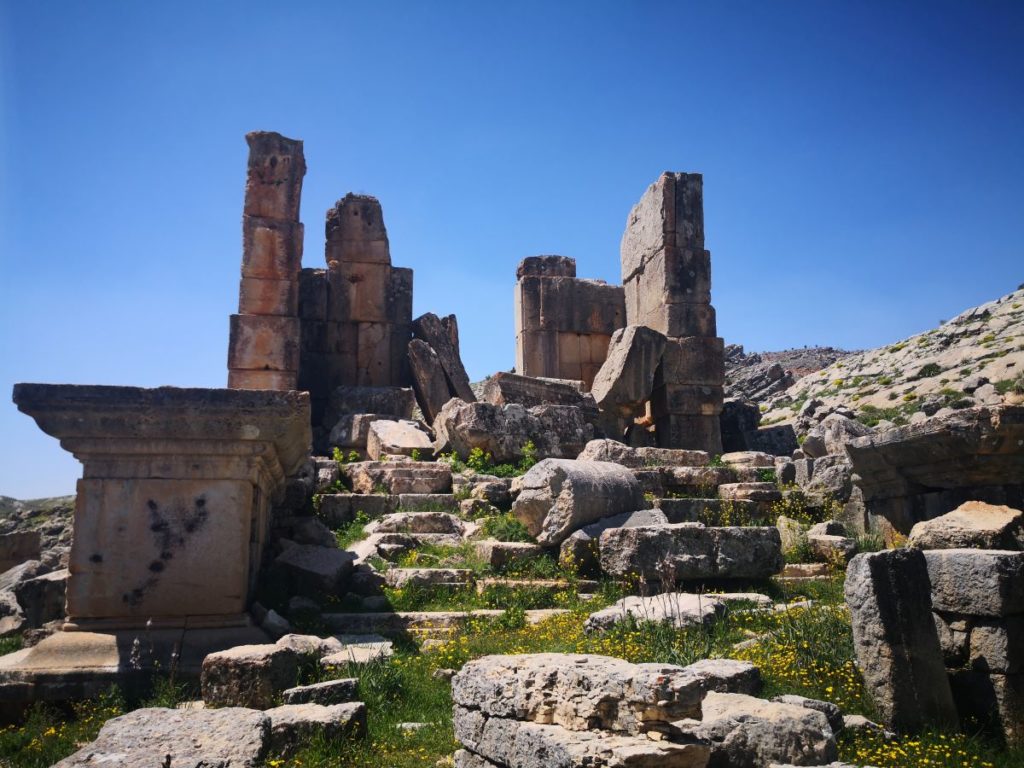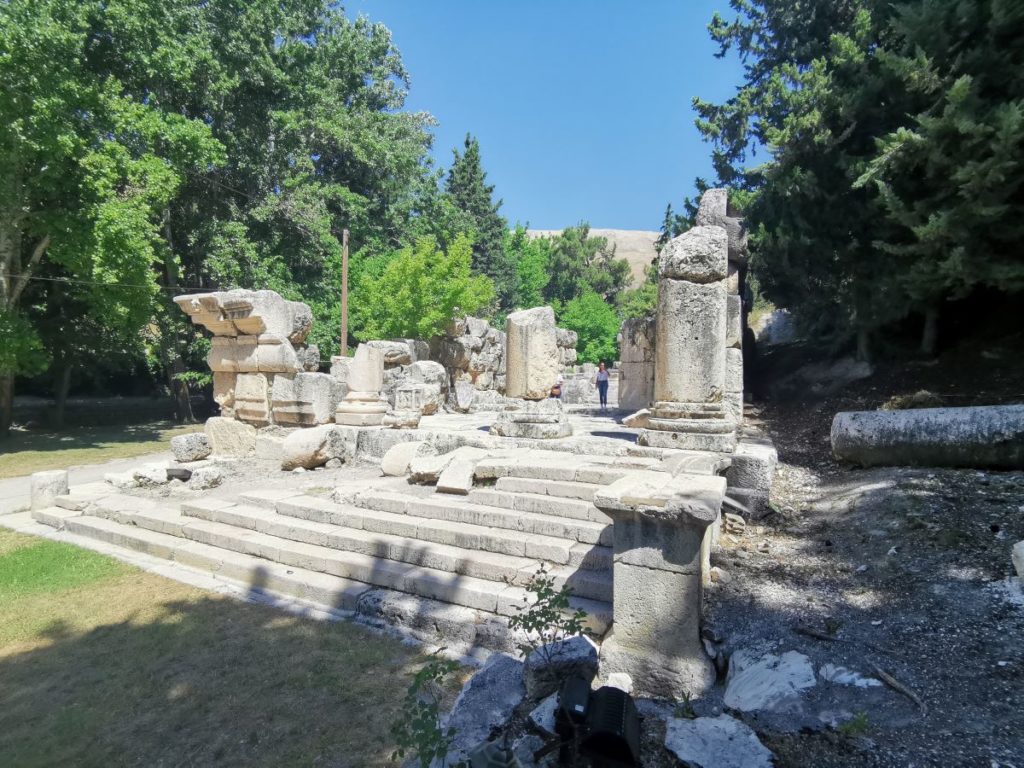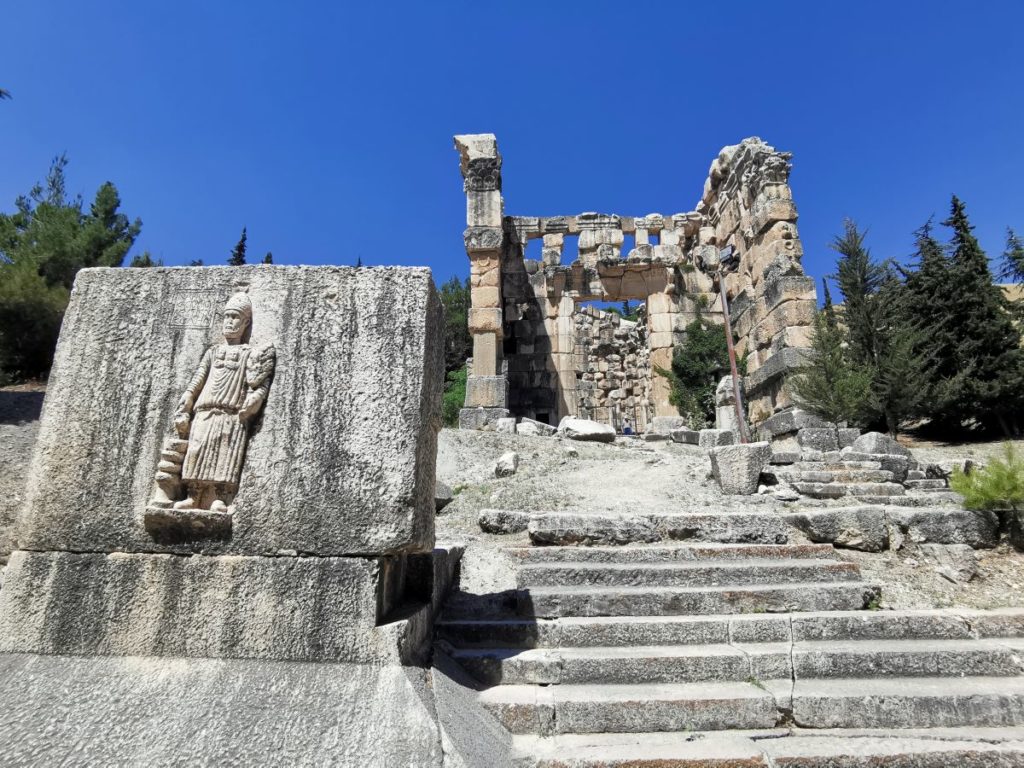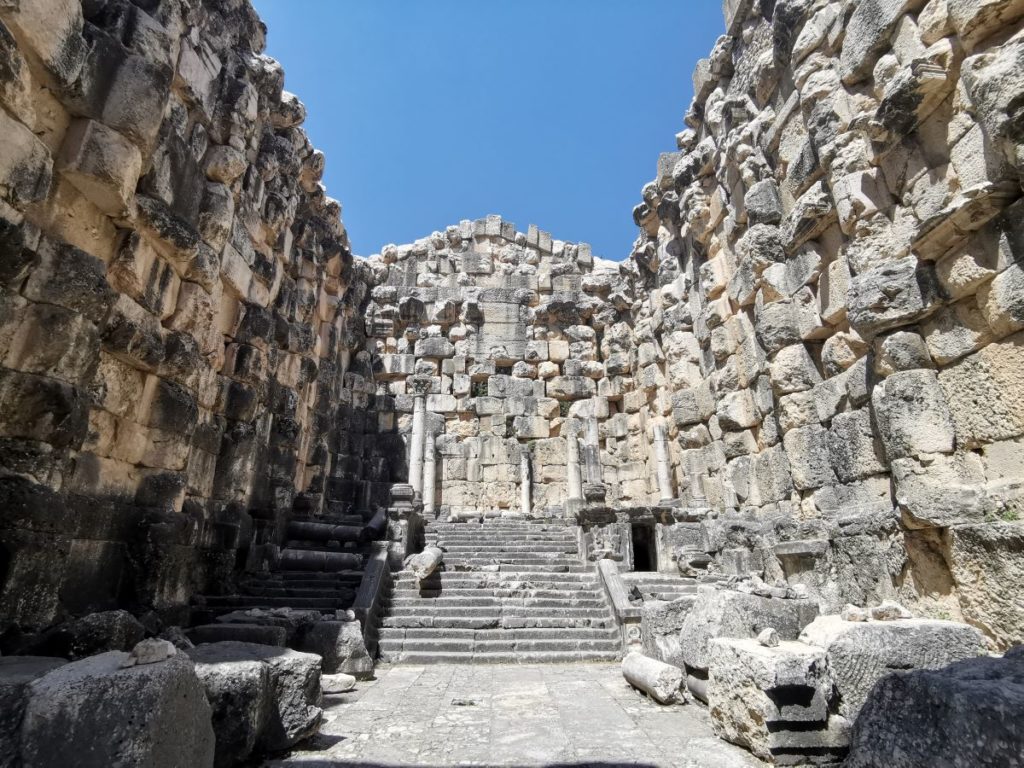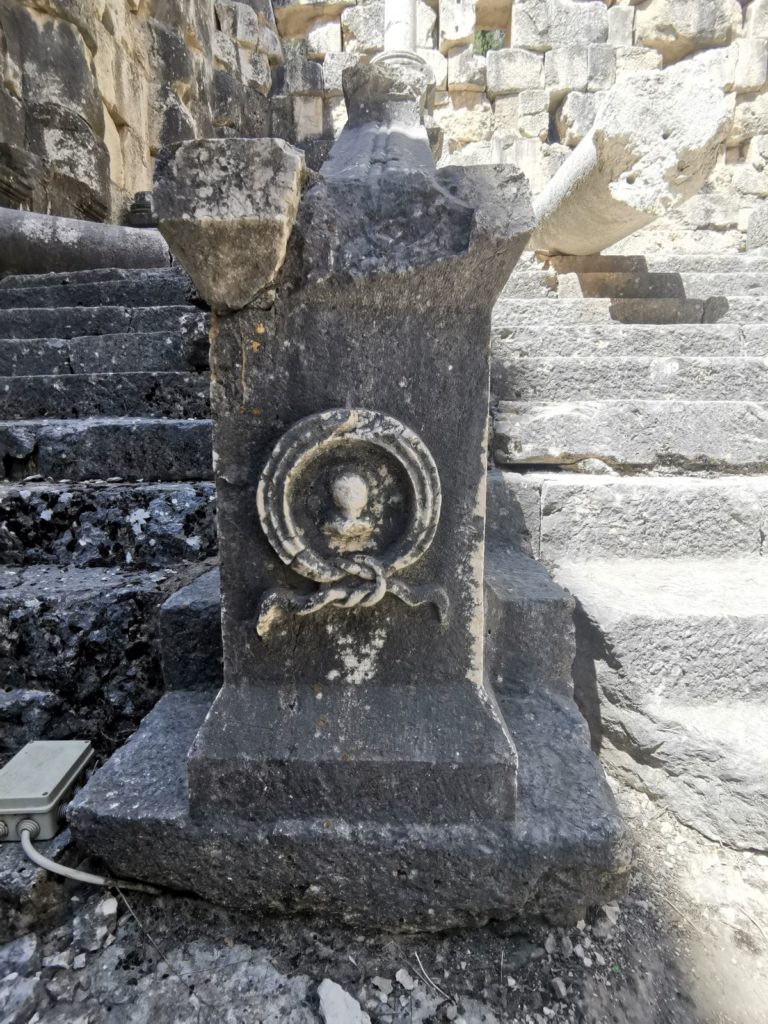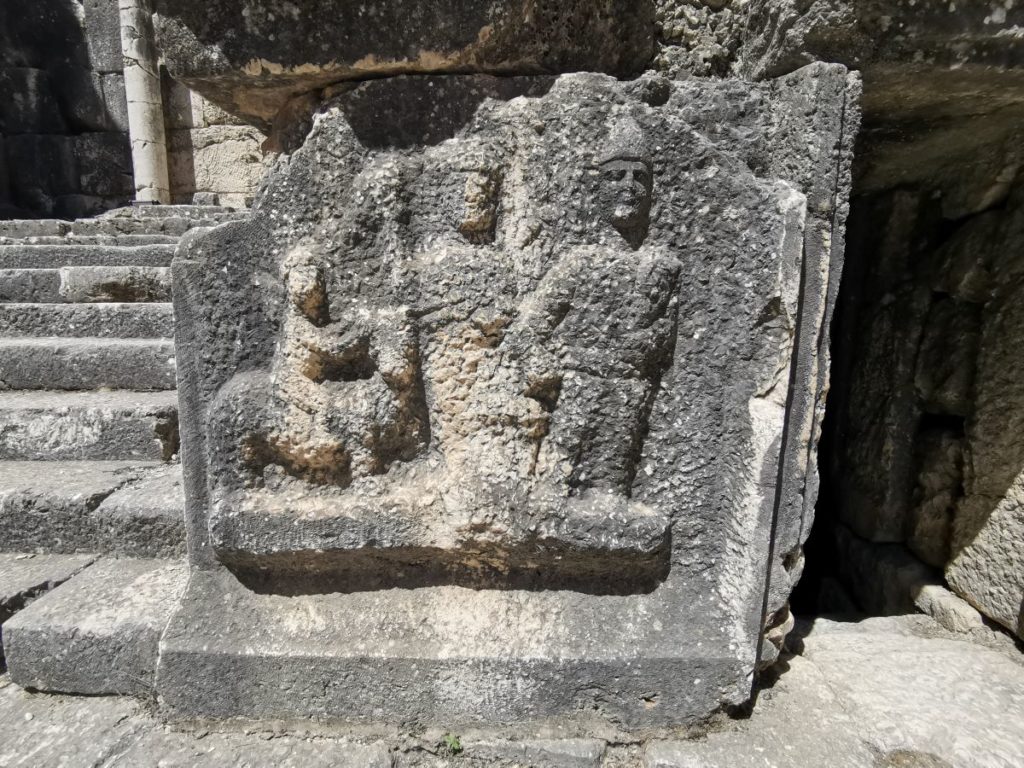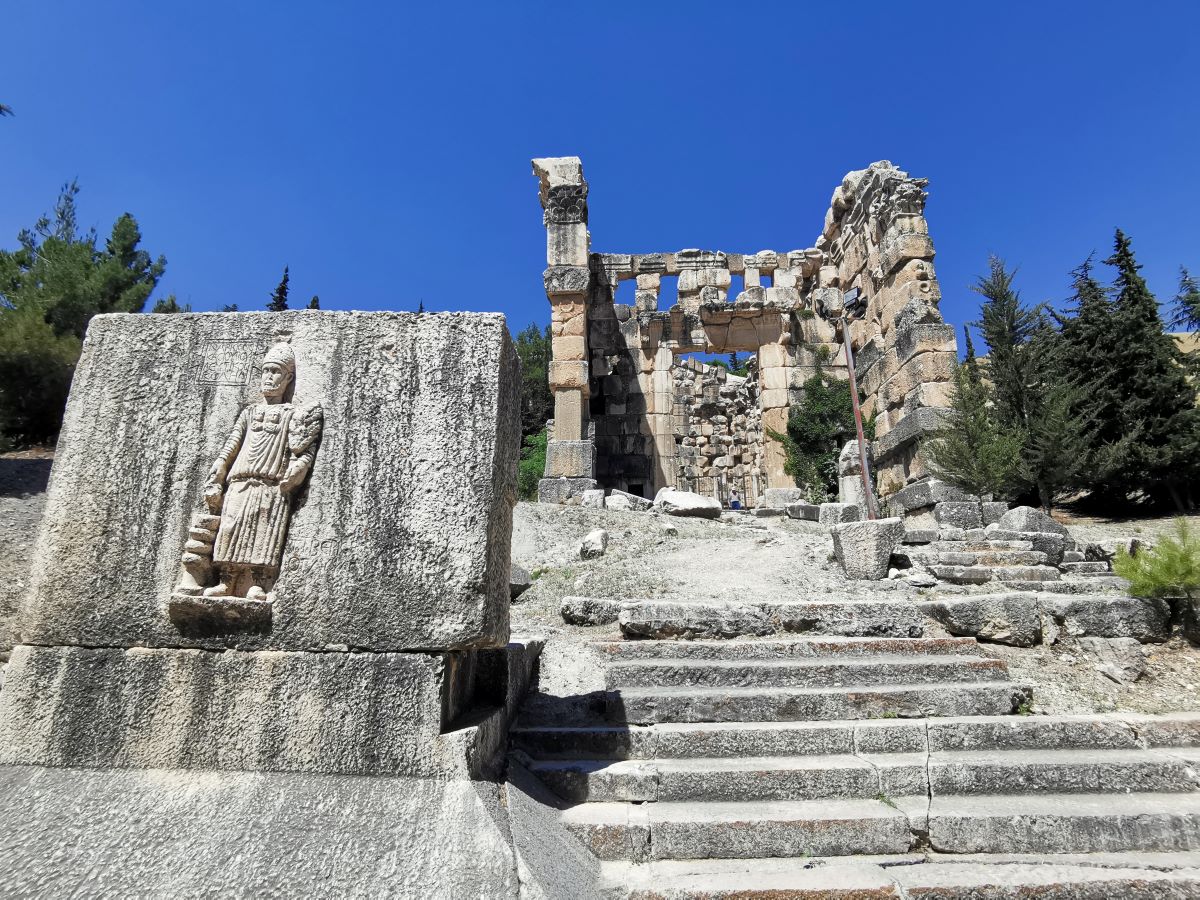Niha houses two archeological sites, each featuring two temples built during the Roman era, around the 2nd century AD.
Toponym
The village of Niha was divided in antiquity into two different localities, each having its own name, known as:
*Nihatha, from which the current Niha derives,
*Mifsa, locally known today as Hosn Niha, which is located on the slopes of Niha.
These appellations are attested by the inscriptions found on site.
Deity
In Roman times, these two localities were inhabited by a community made up of Roman pilgrims and settlers.
In the case of Nihatha, the inhabitants paid homage to a divine triad similar to that of Baalbek, with the difference that the gods who compose it retain their Semitic names: the supreme god Hadaranes and the goddess Nihathena, and perhaps alongside a young minor consort whose name is unknown, but whose appearance is said to be similar to that of the Heliopolitan Mercury.
In the case of Mifsa, the inhabitants paid homage to a god named Mifsenus, specific only to this locality.
Localities
Niha houses two temples located on either side of a stream whose course has been laid out since Antiquity. In the early 1940’s onward, both temples underwent in-depth excavations and restoration. The excavation works also addressed the probability that an ancient settlement is suspected under the terraces and houses of the modern village, but this part of the site has not yet been documented.
Hosn Niha site occupies the head of the Niha valley, located 1km above the modern village. It was built near a stream which feeds the village of Niha, and which controls the access road through the rocky paved path – passing near an ancient quarry – that links both sites together.
According to a Latin inscription found on site, Hosn Niha was the center of a small town endowed with the status of vicus (a village within a rural area) and bearing the name of Mifsa. The village Mifsa would be comparable to the Mispheh of the Hivvites, Biq‘at Mispheh, Mispa or Mispé, which the book of Joshua (9, 8, and 11, 3) locates between Mount Hermon and the Bekaa.
Temples
Niha – The temple dedicated to the god Hadaranes:
The temple rests on a three-sided podium, open to the east, of a tetrastyle prostyle plan (temples featuring a row of columns on the front) and of Corinthian order. It comprises a pronaos (outer part of a temple forming a portico) and a cella (where the statue of the deity is venerated) at the bottom of which the platform of an adyton (restircted area with the cella) surmounts a crypt.
The entrance to the temple is adorned by an imposing bas-relief image of the temple priest Narcissos, and had a massive altar which foundations can still be recognized.
Niha – The temple dedicated to the goddess Nihathena:
The temple rests on base-like podium, preceded by a flight of stairs.
Open to the south, it is of a tetrastyle prostyle plan, comprising a pronaos and a cella at the bottom of which rose the platform of an adyton without a crypt. The front of the cella had a large axial bay and a small side door on the right. The cella floor is paved.
The site also features the remnants of a ruined building, onthe north-west side, which may have also been a religious sanctuary, in addition to a couple of votive monuments, including an offering table and a plinth bearing the image of Atargatis, that were discovered when the site was excavated.
Hosn Niha – The temple dedicated to the god Mifsenus:
The building rises on a rectangular foundation block more than 40m long, the last foundations of which are visible in places. Open to the east, it rests on a high podium, following the Corinthian order of tetrastyle prostyle plan, comprising a pronaos and a cella at the bottom of which the platform of an adyton surmounts a crypt.
In the middle, a staircase of ten steps led to a landing where rested the the niche welcoming the cult image.
A Latin inscription found on site mentions several sources of funding of the temple: to the property of the sanctuary and to those of the village is added the contribution of “faithful of the god Mifsenus” (cultores dei Mifseni), under the control of nine officials. This god is unknown, but from his name we can deduce that of the village where he would be specially venerated and which could be located in Hosn Niha: Mifsa. Thus, the temple may have belonged to this divine patron.
Unfortunately, the temple was heavily damaged from the interior during the Lebanese civil war which left a huge hole in the middle of the podium.
Hosn Niha – The temple with the unknown diety:
Poorly preserved, it is open to the south, and rises on a massive foundation, of a distyle in antis plan and of an ionic order, comprising a pronaos and a cella.
The temple is decorated with corner pilasters at the back. Inside, the cella is an almost square room with smooth walls.
Hosn Niha site also witnessed the building of a Byzantine church by re-using the stones of the temples. The church preserved only its foundations.
*To reach the site of Hosn Niha, take the road west towards the slopes of the village starting from the first site. As you drive towards Hosn Niha, notice on your left side the ancient quarry where you will notice big rock-cuts in the slope. You then cross a road surrounded by apple trees up to a point where you will see the sanctuary. You can park your car on the side of the road and walk a 5minutes trail to reach the temple.
Karim Sokhn
Tour Operator & Tour Guide
References:
La vie Religieuse Au Liban Sous L’Empire Romain – Julien Aliquo
